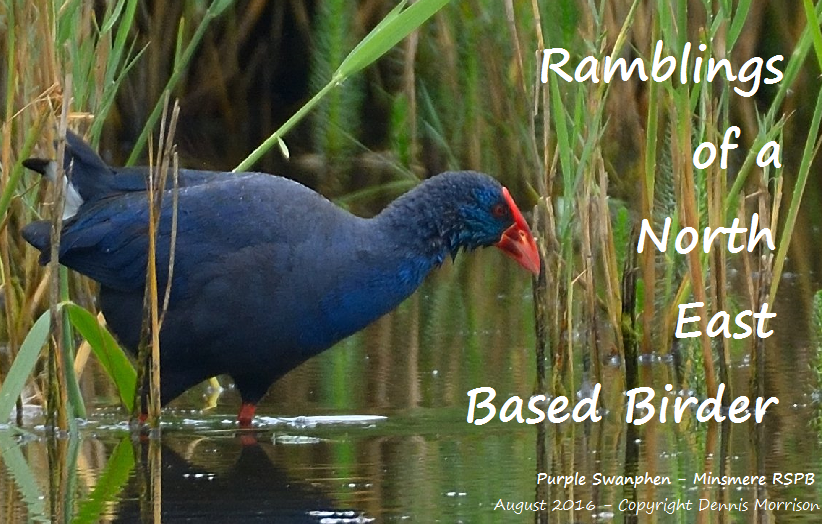To quote Blackbeard of Pirates of the Caribbean :
“There I were……..resting”. It was around 11ish on the evening of Friday and I
was all ready to go to bed, as is typical of me it was time to refresh
BirdGuides before I went to sleep. Imagine my shock when “Dusky Thrush”, “Kent ”,
and “Margate ”
appeared on the screen with the beloved and well known three “!!!” marks next
to the sighting. Apparently it had been there 3 days, so it had already been
messing around in the cemetery for a number of days. I went into panic mode and
rang around a few mates to see if folks were interested; it wasn't long until I
was on the road with some mates heading to Kent . We arrived just after dawn
after some rather good craic about going to Fish and Chip shops at 6AM after
dipping the bird. First of all there was no sign at all, it was very clearly a
rather massive cemetery and thought of “its not going to be here is it” started
to flash through my mind. However after about 30 minutes someone spotted the
stunning bird and it flew around and landed on top of a tree for all to see. PHOARRR!
What a bird! Any Sibe is good but a Sibe that is a Thrush is even better. The
bird performed very well and some ace views were had of the bird during the
morning we were there, we then went off for a right greasy fry up nearby to
settle our clearly unsettled (don't ask) stomachs.
All well and end well yes? NO! There has been some
disagreement regarding the birds identification on a well known birding forum. I
must confess that at the start of the thread some very interesting questions
and concerns were raised, I was interested, right up until Lars Svensson got
back to an email sent to him to say that it was a Dusky Thrush and he had no quarrels with the ID. For me that was
game over really, everything seemed to fall in range of Dusky Thrush of this age and one of the greatest bird ID gurus in
the world was happy with it. Now I don't usually just take someone’s word as
Gospel unless I have tremendous respect for the individual, only a few fall
into this category (for me personally), however it was clear to me on this
occasion that I should trust Lars Svensson given that he has forgotten more
about birds in 5 minutes than I will probably ever know in my entire life. But
I thought I would look at the bird myself more closely and take a look at some
of the objections raised regarding the birds identification.
As far as I can understand the objections raised regarding
the bird are as follows:
- It’s a bit pale on the upperparts.
- Its got some rufous tones on the lower flanks and breast sides.
- I (the objector) didn’t see it.
I think we can really forget about the last one. So looking
at the other two I decided I would do what I thought most people would do; turn
to the literature. This is what I did.
The birds upperparts are no different to pictures of other Dusky Thrushes on the web, in fact I
did find a picture of a male Dusky
Thrush which had pretty much the exact same shade of brown on the back as
the Margate individual.
My literature quite categorically states that Dusky Thrush in first winter is “variable” (Birds of the Indian Subcontinent).
Meanwhile in my book “Birds of East Asia” the first words on ID are “Extremely
variable”, so there is generally no disagreement amongst the literature so far
the Dusky Thrush is extremely
variable, please note that in the book mentioned here that Naumann’s Thrush is treat as separate. Given that I can find photos
of full blown male Dusky Thrushes
with a similar upperparts colour would really lead to the conclusion this isn’t
important. The book “Thrushes” by Clement and Hathway notes the following “intensity
of brown to coppery-brown on upperparts variable but first-year female browner
than same aged male or adult female”. So that settles that.
Now the other issue was the coppery or rufous markings on
the breast sides and lower flanks. For some this is worry that this bird could
have some Naumann’s Thrush in its
genes from some point in time. This baffles me a little, the bird is otherwise
perfect and it is clear from a quick Google search that Dusky Thrushes can and
do show rufous in the breast sides and lower flanks. A careful look at the Manchester male from a
few years would reveal the very same thing! Also others have noted that in some
of their literature it is stated that birds can have brownish-black markings on
the breast sides and flanks.
Finally from BirdForum;
“
Dear Steve,
This is a first-summer female Dusky. No sign of mix with
Naumann's or
Black-throated. It is about the plainest and greyest
immature female Dusky
one could find, still is OK for that and not atypical at
all. Naumann's
has more rufous on upperparts, which would have shown, and
more obvious
rufous on breast and flanks, too.
You are free to cite me would you so wish.
Kind regards,
Lars
”
….Svensson is happy? I am happy. The apparent lack of other Naumann’s features in the birds upper
and underparts was something that I also mentioned in passing over the past few
days. If this bird were an intergrade/hybrid (depending what guidelines you
follow) then surely it would show more Naumann’s
characteristics, which it clearly doesn’t. With Lars having given the bird the thumbs
up my mind is settled.
(Dusky Thrush - copyright Andrew Kinghorn)
(Dusky Thrush - copyright Andrew Kinghorn)
(Dusky Thrush - copyright Andrew Kinghorn)
Until next time, Foghorn out!



Great pics pal.
ReplyDelete